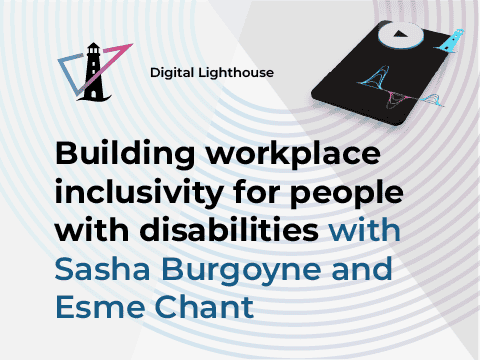
In the tech industry, a lot of people work flexibly and remotely. The sector has a reputation for it. It’s part of how hip we all are, and how much we’re living our fantastic millennial lifestyles.
Having recently been on workation in Amsterdam, I’ve been thinking a lot about how we work and how it can be better, and I’m convinced that increased remote and flexible working is an important first step.
Looking differently at the concept of being ‘at work’
The model where everyone needs to be in the office to do their jobs leads to a very binary way of thinking: You’re either in the office (and hence ‘at work’) or you’re not in the office, and so cannot be working. This completely misses the reality that I can sit in an office all day and not produce anything useful (believe me, I’ve done it), and do important thinking while I’m at home cooking, out for a run or in the shower.
Furthermore, it’s traditionally been thought that the best way for a company to function is for everyone to be physically located in the same place at the same time.
We’ve found a slightly staggered day can have efficiency benefits when handing over from one person to another. Or even a very staggered day: my biggest remote working adventure was in 2006 when my husband relocated to Australia and I went with him. Softwire had co-incidentally just started a major 24-hour support contact. I could cover what would have been the UK ‘night shifts’ and hand back to colleagues in London for their ‘day shifts’. I found that provided I was organised enough to send all the questions I needed a response to before I packed up for the night, I ‘magically’ received all the answers in one go when I woke up!
Flexible working hours
So how are we enabling and supporting flexible and remote working?
Employees don’t have to work the same hours as each other. Some come in early: between 8am and 10am the sales team area is buzzing, while many developer desks are empty. Others have a lie-in in the morning and stay late to finish what they need to do. And we have a few employees with such erratic schedules that you can sometimes find them in the office when you come back to collect something at the end of a night out, or pop in at the weekend.
We’re also very relaxed when it comes to our employees pursuing side gigs. This means that while they’re in the office, they aren’t always ‘working’ in the sense of being engaged in company business. Many are involved in great additional projects, such as small online businesses and various creative pursuits, including at least three semi-professional pop bands. (One of the best things about Softwire is how interesting everyone is and how they manage to balance work with the rest of their life too.)
Remote working
With the exception of a few key roles that require physical presence (e.g. working on reception), everyone at Softwire can work remotely as and when they need to. We have some employees who do so more permanently, working from home a couple of days a week, or in one case, moving to Spain for a year, while continuing to work for us. The key thing is to make sure it works for our projects (and experience shows, it generally can).
Like most businesses, we’ve got a range of tools to support remote collaboration between colleagues and customers, including a Meeting Owl in our main conference room. This takes video conferencing to a new level, by simultaneously providing a 360° view of the room, and a close-up of whoever is currently speaking.
Nurturing inclusivity
As well as the benefits we’ve outlined above, flexible and remote working is an important way we can nurture a culture of inclusivity by supporting our employees’ wellbeing and their families.
Children are a big reason why people work flexibly and remotely. Many parents are up early, and some like to use these dawn hours to work from home, before dropping the kids on a school run and heading in to the office late morning. And at Softwire, it’s not just the female employees who work flexibly so that they can take their children to school or spend more time with their families. Many of our male colleagues do as well, including part-time in some cases.
Another interesting aspect of allowing people to work from home is that the binary concept of sick/not sick no longer holds. While you can still get wiped out by something horrible, if you just have a sniffle and don’t want to infect your colleagues, you can keep your germs at home while still being productive. And of course, for those who suffer big injuries or undergo operations and are keen to get back to work, and may not physically be able to come to the office, working from home can be a massive blessing.
Helping our people fulfil their ambitions
In this way, giving our people greater flexibility to fit work around their home lives and other interests supports two of our central aims as a business: to be more productive, and to nurture an ever-more inclusive culture where everyone feels welcome and able to fulfil their professional and personal ambitions.


